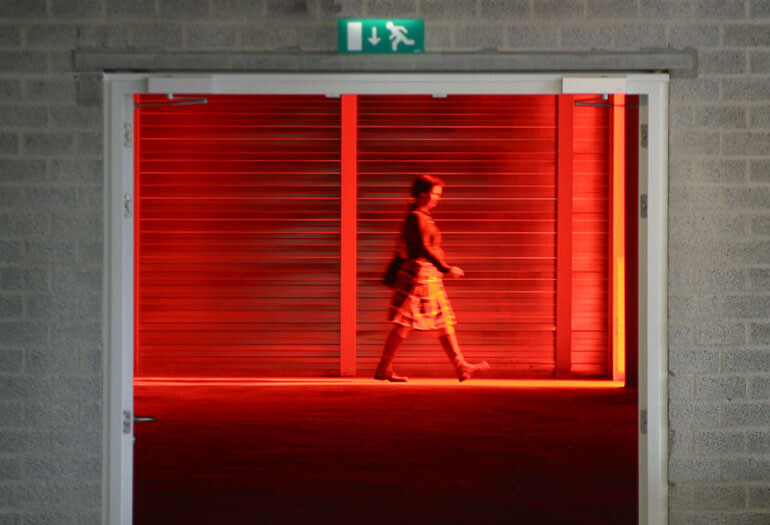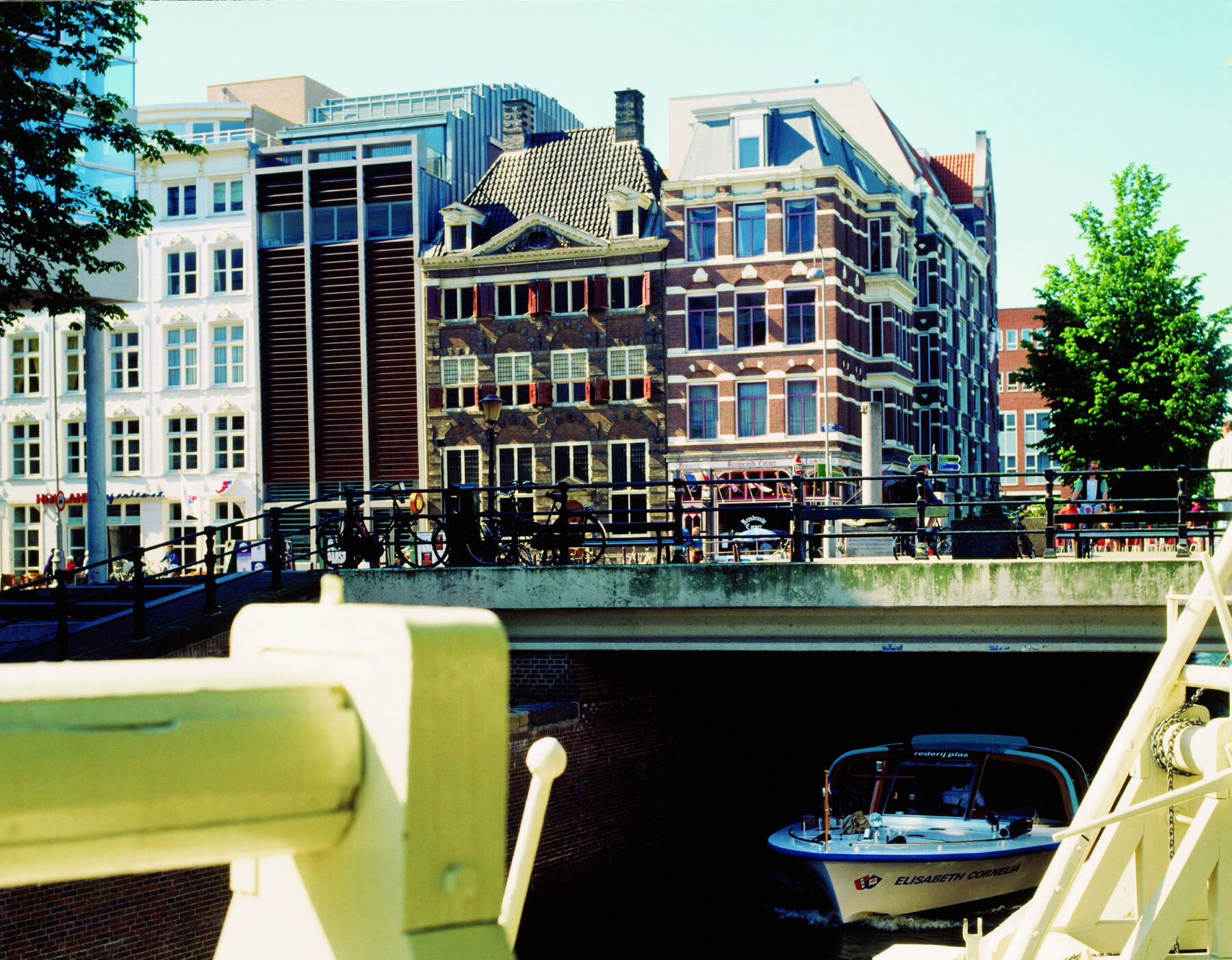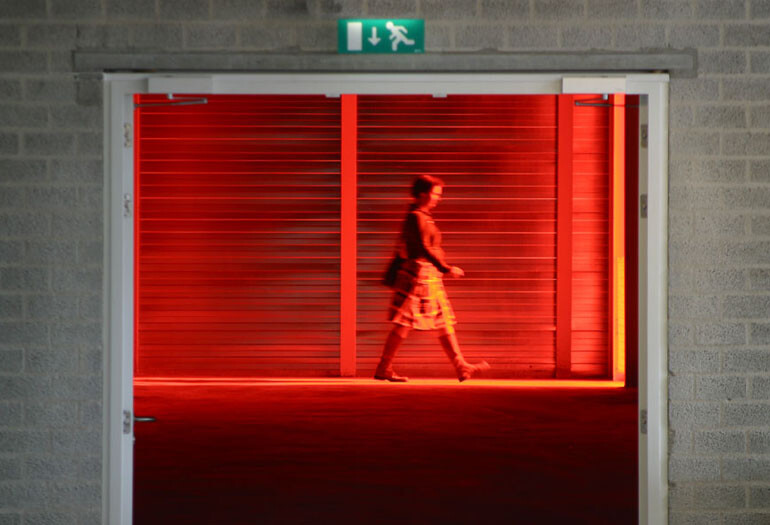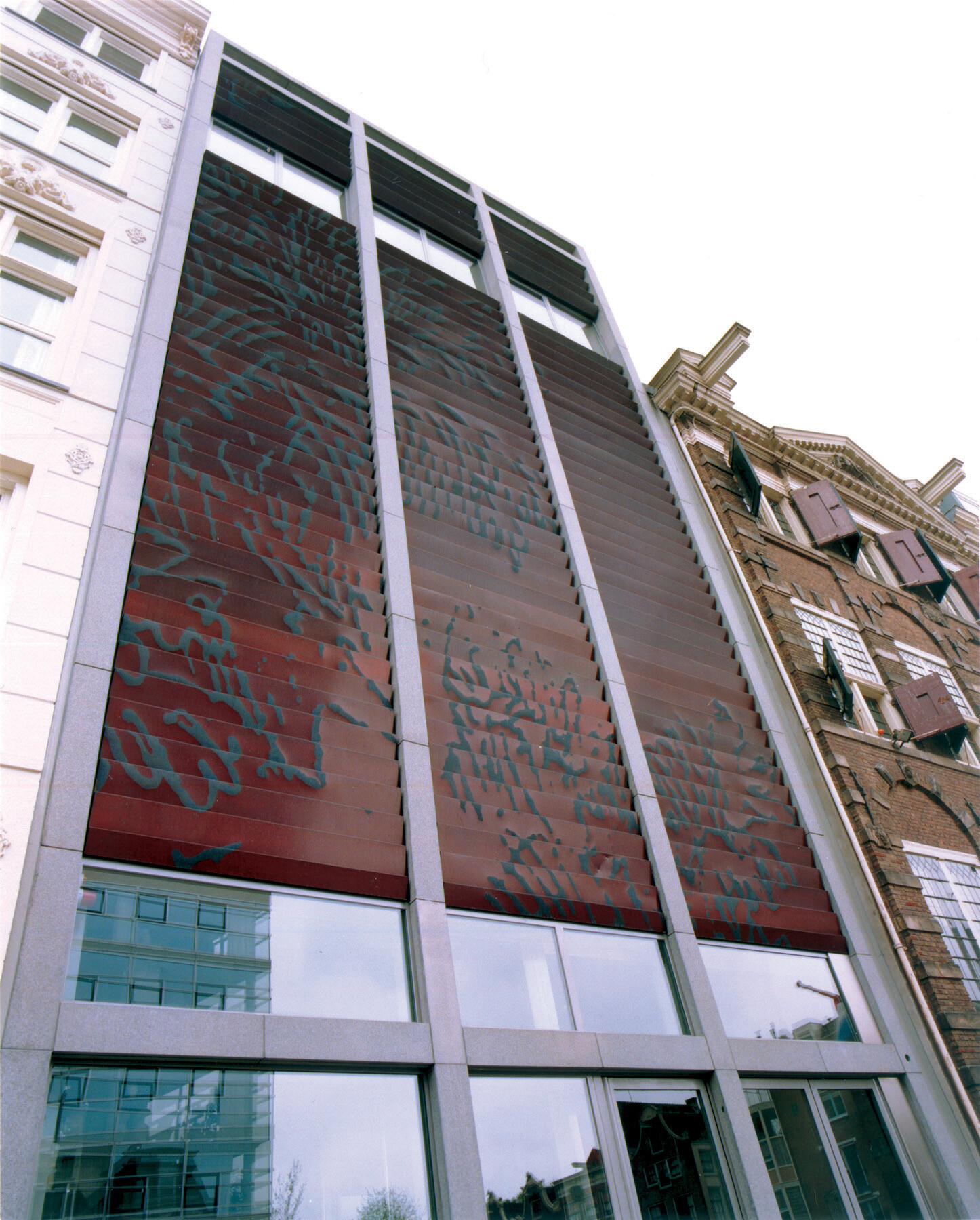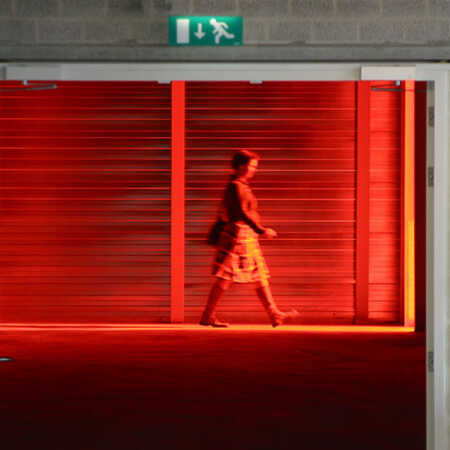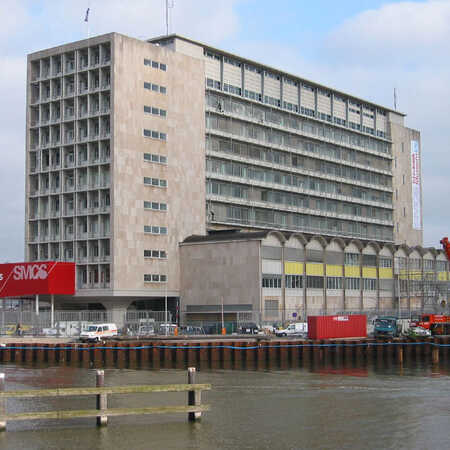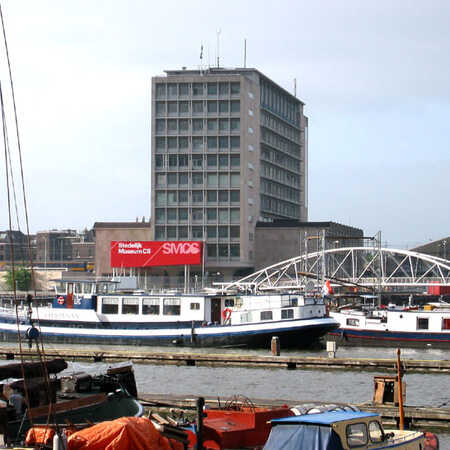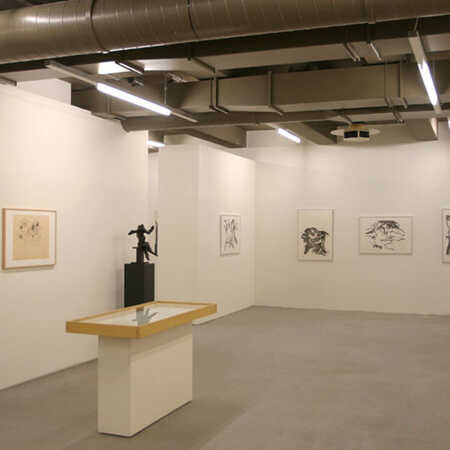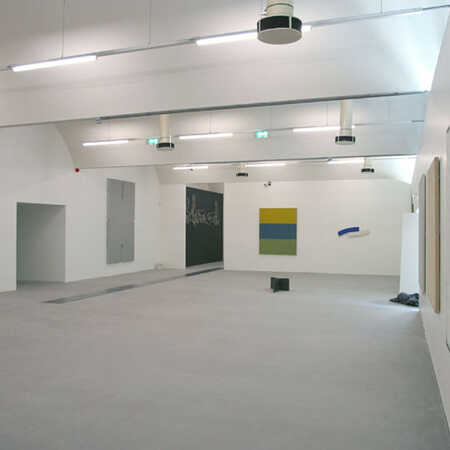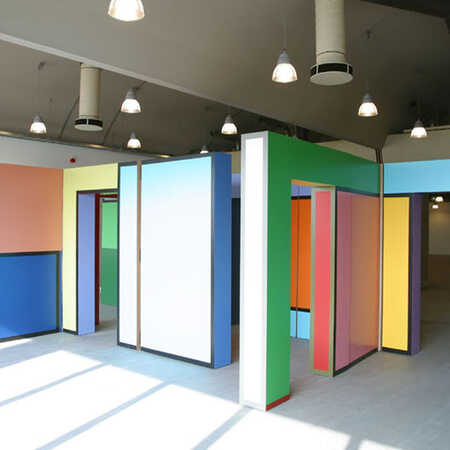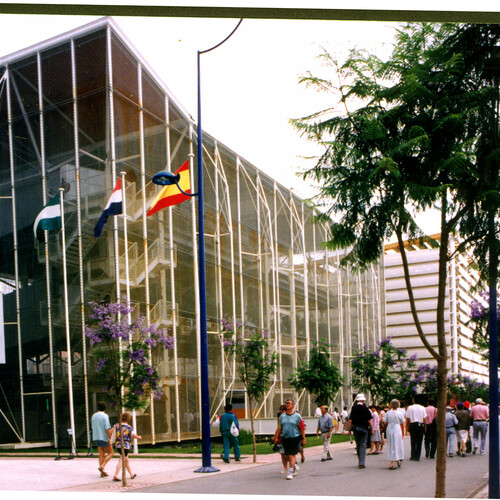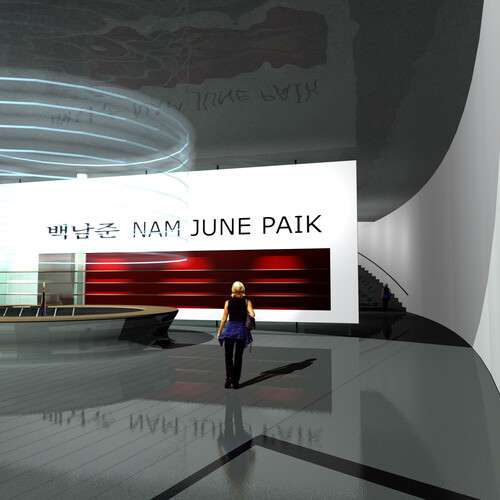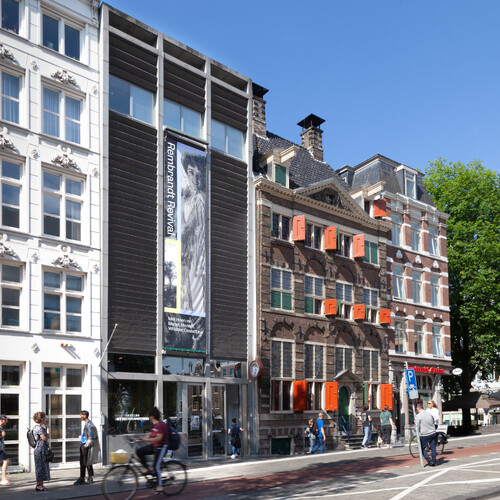Temporary location of Stedelijk Museum Amsterdam in the former TPG building on Oosterdokseiland
This article was first published in Museum Bulletin, Stedelijk Museum Amsterdam
The architects ZJA are responsible for renovating the second and third storeys of the former TPG building into Stedelijk Museum CS. The aim was to create a clear route for the public, and as many walls and spaces as possible for showing art. For this the building had to be altered radically at a number of points, in order to guarantee the comfort and safety of visitors, and the art. The museum has not taken on any definitive form, nor will it. The space permits simple interventions in the lighting and walls in order to adapt it for changing exhibitions. After several years service, the museum will make way for new offices; according to the plans, architect Erick van Egeraat will strip the building to a shell and turn it into a new office block.
Rein Jansma explains the renovations for SMCS:
"We immediately saw the unique opportunity for a temporary museum in this spot. Oosterdoks Island is a place of change, of renewal. At the beginning of the 21st century the Stedelijk Museum too is at the point of renewing itself. A dynamic place in the city like this presents the Museum with opportunities for challenging combinations and new meanings. It is a wonderful location for a meeting place."
"At the outset there was really no programme of requirements; we put that together in the course of discussions and the design itself. There was no time and relatively little money. The Museum on the Paulus Potterstraat was closing on January 1, 2004, and the earlier the temporary museum would be open, the better. We had two months, November and December, for the designing, in January the contracts were let, and February 1 the contractor began with the renovations. Furthermore, during the planning asbestos in the building was being removed, which meant that we could not have access to see the site. The contractors had to prepare their estimates on the basis of our drawings, because the floors were off limits. We put most of the relatively low budget into the museum; the entry areas had relatively less priority in the spending. A relatively larger amount that is characteristic of Elling's old postal station remains visible in these spaces."
"We were working with an existing building, which moreover will be reused. That imposed some basic conditions, such as the impossibility of a structural breakthrough in the centre of the high-rise, which will continue to stand. This meant, among other things, that we had to put the red 'box' on the front, which contains the ramp that reconciles the difference in height between the entry on the second turned the box into the 'sign board' that at a distance informs visitors where the Museum is.Provisions for climate control and security played an important role in the design. The long double walls inside the facades are intended to keep out the heat in the summer and form an extra skin in the security concept. The fear of it getting too hot in the summer also made us opt for strip lights of fluorescent fixtures, because of all the sorts of lamps these produce the least heat. The furniture and builtin components were made of the least expensive sheet material we could find, taking into account the short life expectancy of the temporary museum."
"In terms of atmosphere we strove for a museum in which art gets all the room it needs, but at the same time we have given the city a chance to intrude. In the spaciously conceived anterooms outside the museum galleries, the entry hall on the front and the coffee-corner on the side overlooking the tracks, we created as much daylight and views as possible. Even in the museum galleries we have realised possibilities for having outlooks at a number of points, so that the visitor is always aware of the surrounding, ever dynamic city. These points can differ from one exhibition to another. But the most spectacular vista is from the eleventh storey, where visitors can enjoy a panorama over Amsterdam and its vicinity on all sides. The restaurant on the eleventh storey is directly accessible from the museum galleries by elevator."
"With regard to the results, we are particularly satisfied with the fine, spacious galleries. We are also happy that we have been able to strip the ceilings of the jumble of utilities and services that was mounted there. Only what is absolutely necessary is still left. We particularly find the galleries under the barrel vaults on the upper storey of the museum impressive, even on repeat visits."
Client: Amsterdam PMB
